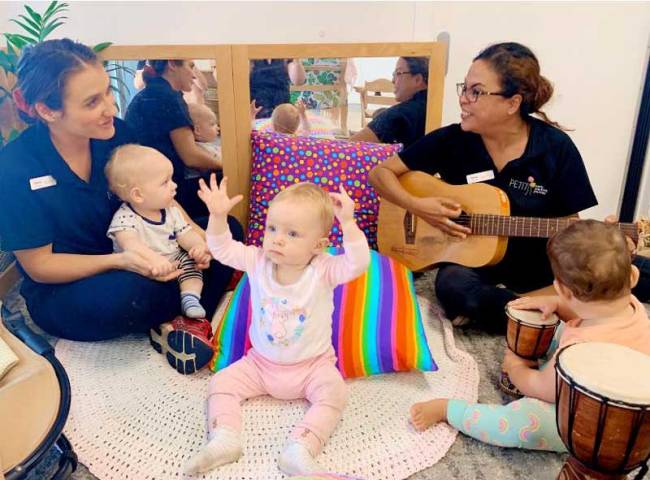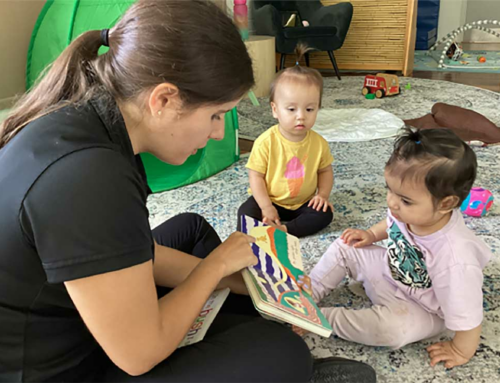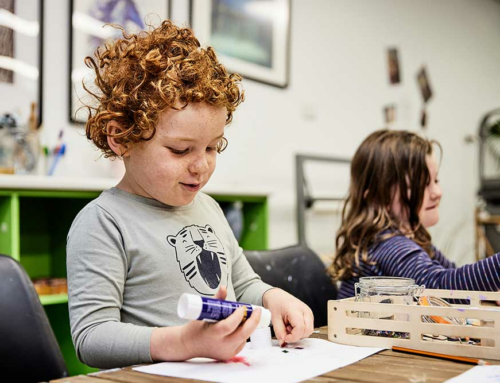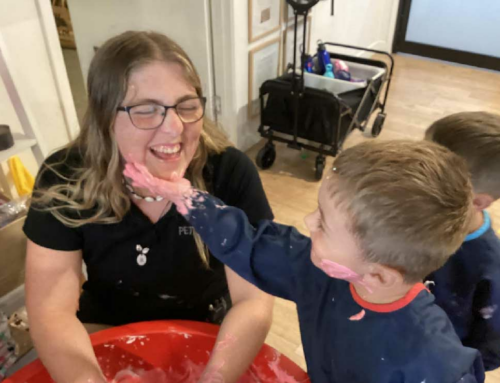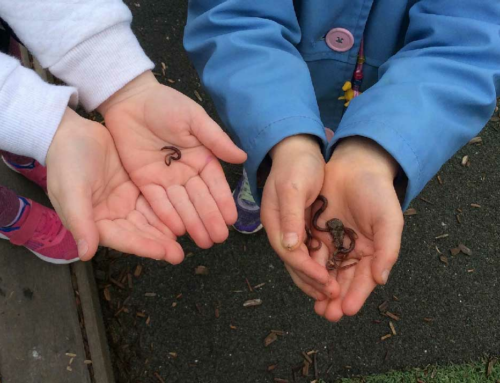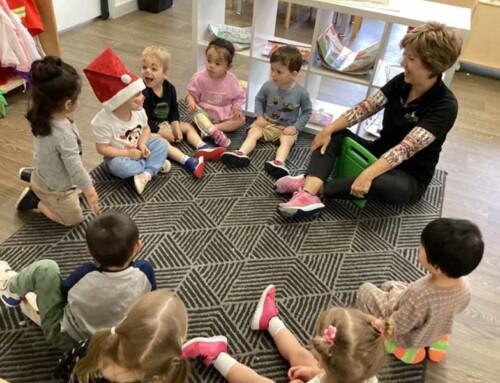Children love engaging with music and movement in early childhood education. It helps them express their feelings and emotions, learn to work in groups and develop their self-confidence and imagination.
Interacting with music and movement in early childhood education is part of a child’s everyday life in Australia. They add colour and fullness to the early childhood curriculum and to a child’s daily experiences.
Music and movement provide children with so many benefits. They help children develop skills such as cognitive growth, problem-solving, self-expression and social development. Without music and movement in early childhood education, a child’s learning is incomplete.
In this article, families looking to enrich their child’s development through music and movement will:
- Learn about the benefits of music and movement for children.
- Discover music and movement activities for babies, toddlers and preschoolers.
- Uncover the Importance of music and movement in early childhood development.
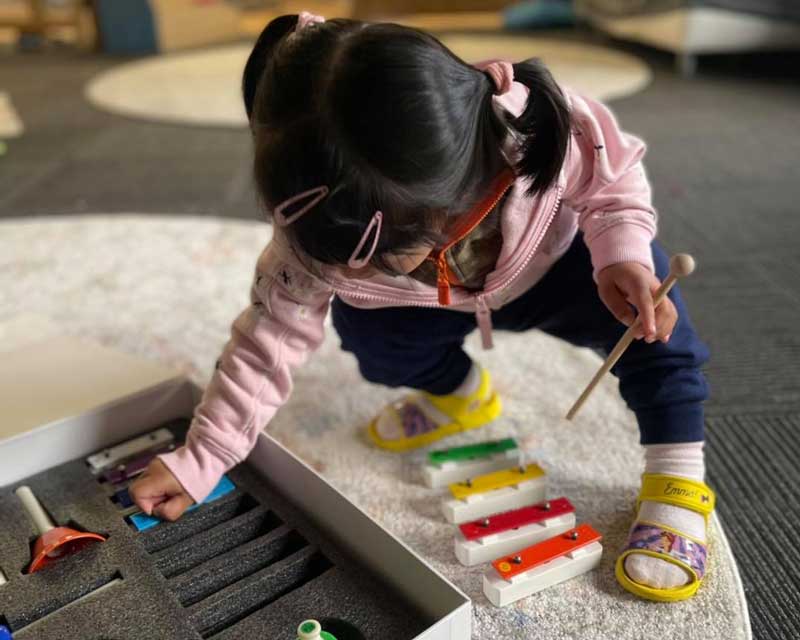
The benefits of music and movement for children
Research into music and movement for children over the last 10 years has indicated positive effects on a young child’s development. Beat, rhythm and tempo stimulate young minds, encouraging pattern recognition and auditory discrimination.
The benefits of music and movement for children under 5 years include helping them with:
- Their cognitive growth: How they think, explore and work things through.
- The development of problem-solving skills, like logic, reasoning and sequencing.
- Self-expression: How they communicate feelings, ideas and thoughts through music, movement or playing an instrument.
- The development of physical skills like hand-eye coordination, spatial awareness and balance.
- Social skills like cooperation, taking turns and sharing the music experience of learning how to dance and play instruments with others.
- The regulation of their emotions by learning to calm down, relax and control their feelings.
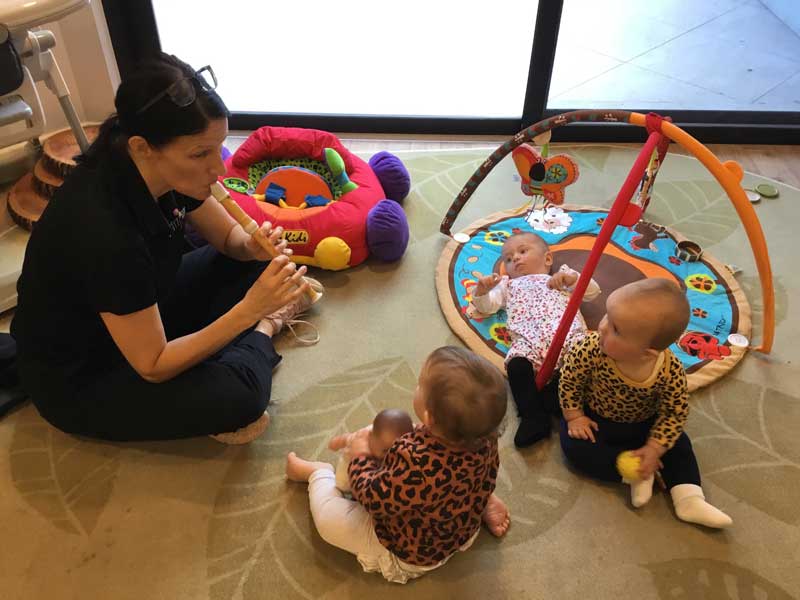
Movement and music activities for babies
Music plays an essential role in a baby’s development. Music expert Dr Ibrahim Baltagi in his Mini Parenting Master Class on UNICEF.org, states that an unborn child begins hearing music from 16-18 weeks.
After birth, music can stimulate all areas of brain development. Babies can recognise familiar sounds and develops their creativity and imagination. Music stimulates all areas of brain development.
A baby’s movement begins with reflexes, but there are several ways to encourage your baby to start moving with soothing music. You can:
- Promote music movement as soon as they are born. Include music in your birthing plan. Then, while at home, simply hold them in your arms and sway along to music that you’re listening to.
- As babies develop, you can encourage music play by providing them with the opportunity to join in with activities like singing nursery rhymes, patting drums and shaking maracas.
- Music can help soothe a baby to sleep. Singing, playing calming music, or white noise to a baby can help them relax and soothe them to sleep.
- Introduce your baby to rhythm instruments. Drums, maracas, and other rhythm instruments are great for babies because they are easy to grasp and shake, which helps develop their fine motor skills.
- Use stroller music. You can also encourage your baby’s music appreciation by carrying rhythm instruments in the stroller. When your baby gets fussy, they may like to play with them.
- Play music during nappy changes. When you change their nappy, let your baby listen to music like lullabies, orchestral or meditation music that is calming. You can even sing nursery rhymes.
Make music part of your baby’s daily rituals. Music activities fit right in with bath time. Familiarise your child with songs and music they will come to know and love. Rubber Duckie, first heard on Sesame Street in the 1970s, is still a bathtime favourite.
Most early childhood Educators agree that quality music and movement in early childhood education learning programs for babies begin with nurturing a child’s natural interest.
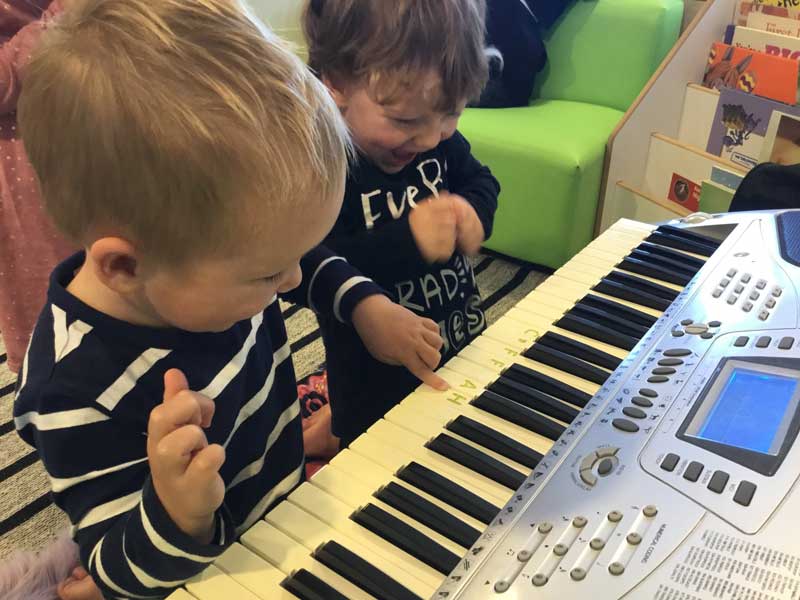
Music and movement activities for toddlers
Toddlers benefit from music and movement activities because they tend to be full of so much energy. Music provides a ready-made way for them to expel their enthusiasm.
Learning programs for toddlers should include movement and music experiences such as:
- Singing and dancing along with the music. Most toddlers enjoy singing familiar songs and rhymes. Music provides an easy way for you to sing together.
- Patting drums, shaking maracas and other music activities. Give toddlers instruments they can hold and shake like tambourines, drums, maracas or cymbals. If you don’t have any musical toys, you can make your own or repurpose household items like pots and spoons.
- Stamping feet, clapping hands or even banging an instrument on an adult’s lap! Music and movement that is pitched at a comfortable level for adults can also become a fun family social activity.
- Being provided with opportunities to participate in fun and enjoyable experiences. Educators know that the positive response to music increases when music and movement are familiar.
- Music games that help children to develop fine motor skills and that are fun to wriggle and move to.
Make music a part of your toddler’s daily routine. Add music into everyday music and movement activities, like bedtime routines, supermarket trips, or even cleaning routines.
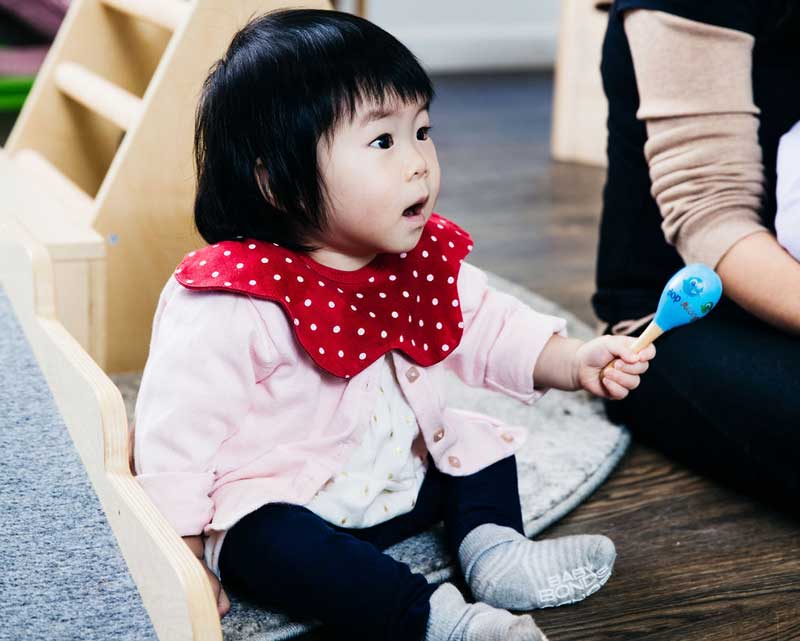
Music activities for toddlers can help:
- Expand their language. When you sing songs together, even simple nursery rhymes like ‘The Wheels on the Bus’, the music experience with movement stimulates all areas of brain development.
- Grow their imagination. Deep in your toddler’s mind, music can take them to places they’ve never been before. Playing musical instruments gives toddlers the chance to make music — a powerful experience for young children.
- Improve motor skills with movement. Toddlers will enjoy crawling on the floor, marching in place, or climbing up and downstairs with music and movement experiences.
- Broaden their experiences of other cultures as well as the country they live in.
- Learn how to interact. In early childhood education group movement and music experiences, Educators encourage children to dance and play instruments together.
Music and movement in early childhood education can be spontaneous. Young children are active learners choosing to dance and sing in the moment. In addition, playing musical instruments or singing with children can encourage positive connections with children.
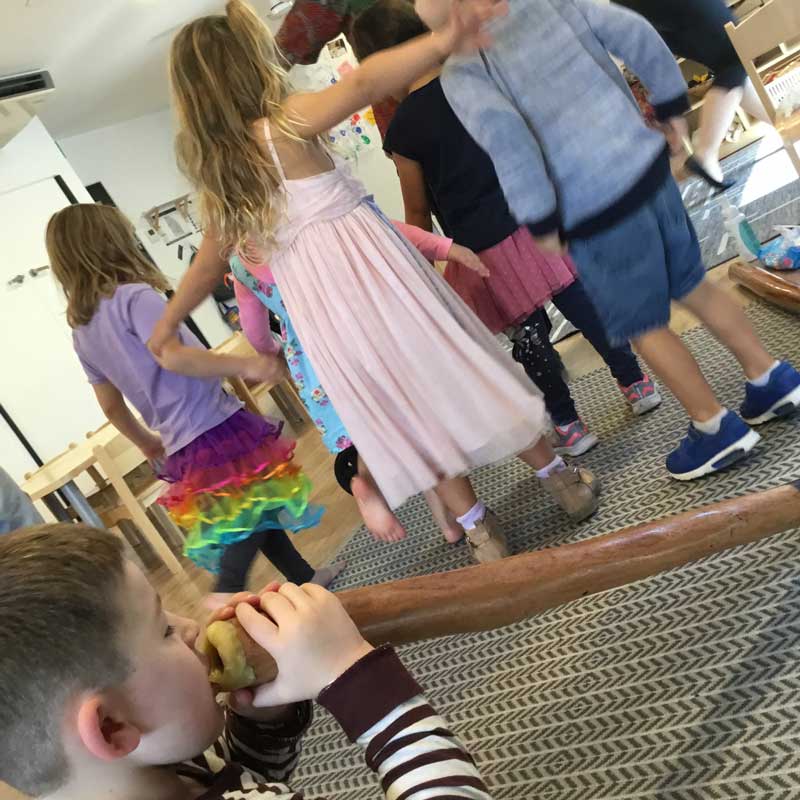
Music and movement activities for preschoolers
As preschoolers grow, their enjoyment of music and movement activities increases. Educators can introduce more musical elements and advanced movement routines into their experiences.
Music and movement activities for preschoolers include:
- Creating music with musical toys or building their own with natural materials and loose parts. Preschoolers enjoy making music with musical toys that are designed to teach children about music.
- Making music in the playground. Involve all your child’s senses by using drums, cymbals, chimes or bells, which will stimulate their auditory and tactile senses.
- Showing self-expression. Preschoolers enjoy music and movement in early childhood education because it brings out the way they naturally express themselves.
- Moving to different musical rhythms and tempos often as animals, such as elephants or birds. Preschoolers love to move, and adding music provides the perfect opportunity for experiences designed to help children become familiar with music notation.
- Teaching preschoolers simple dance steps to improve skills, such as coordination, balance and rhythm.
- Selecting different types of music to help improve children’s concentration, encourage memory skills and expand their imagination.
When you encourage a child to kick a ball in time with music or clap their hands as they jump up and down, you’re helping them learn about music, rhythm and movement. This early introduction to music can help build the foundation for an appreciation of music later in life.
By participating in music and movement activities with their peers, preschoolers will develop essential skills for starting school.
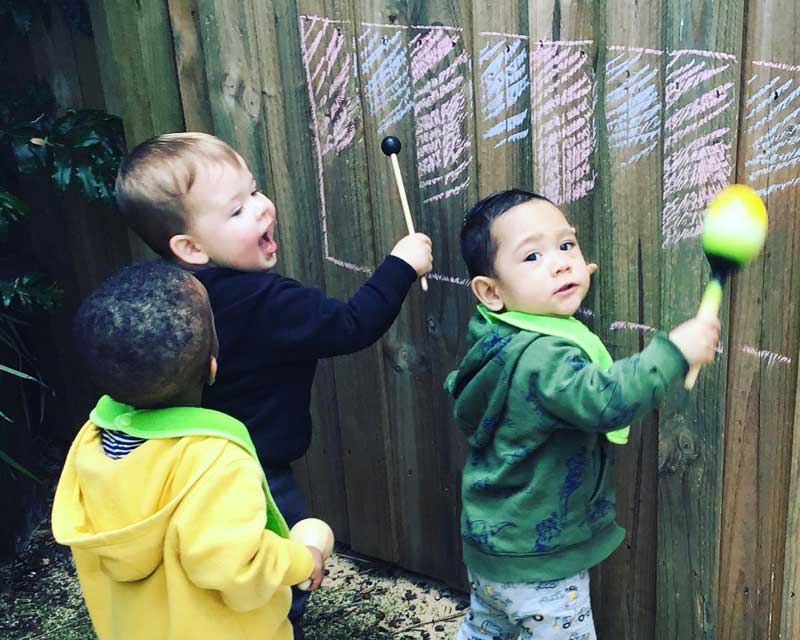
Importance of music and movement in early childhood development
Music and movement in early childhood development support physical literacy, social skills and helps with language development. It’s also an activity enjoyed by many people of all ages, so it is fun for your child to do during their preschool years.
Four important benefits of music and movement in early childhood education include:
- Music and movement can be healing. It’s simply good for children. Studies have shown that music can help children with everything from autism to school performance
- It also helps babies learn languages. Music and movement draw on a baby’s natural well-tuned sense of sound, rhythmic abilities and a strong motivation to communicate with others.
- Music helps with gross motor development because it involves rhythm and sound recognition. Children have a natural inclination to skip, run, jump, crawl and walk when music is playing.
- Music and movement in early childhood education inspire children’s creative self-expression either by making music with an instrument, singing along or making up their own songs and dancing.
Music or movement can be blended with everyday routines and kept as a unique learning experience for a set time each day. For children who enjoy music and movement in early childhood education, extra-curricular music and dance classes can be highly beneficial to their learning.
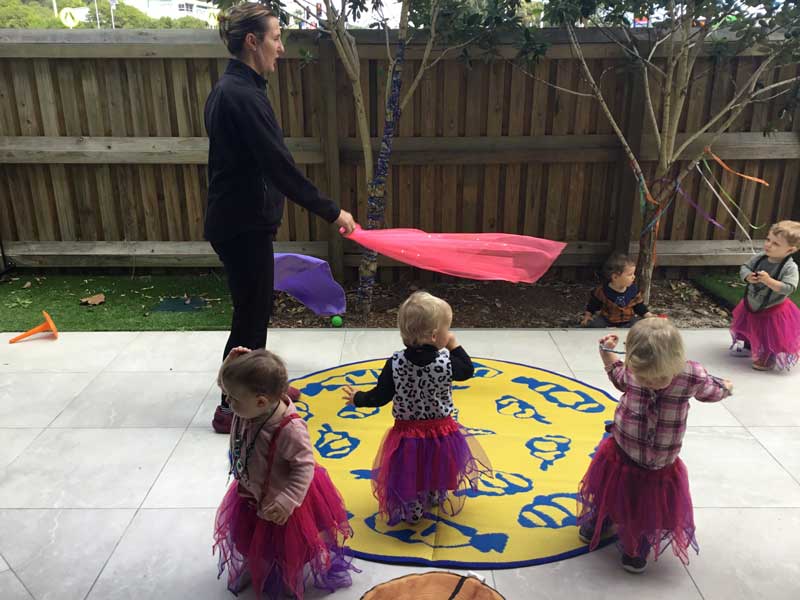
Discover music and movement with Petit Early Learning Journey
We love engaging children with the discovery and enjoyment of music and movement with new experiences every day. Our Petit ELJ centres use music and movement to create smooth transitions between environments and different aspects of our learning program.
We also offer opportunities for music and movement incursions from local services throughout the year. To learn more about our learning program and our holistic approach to music and movement in early childhood education, contact your nearest Petit ELJ Centre.
